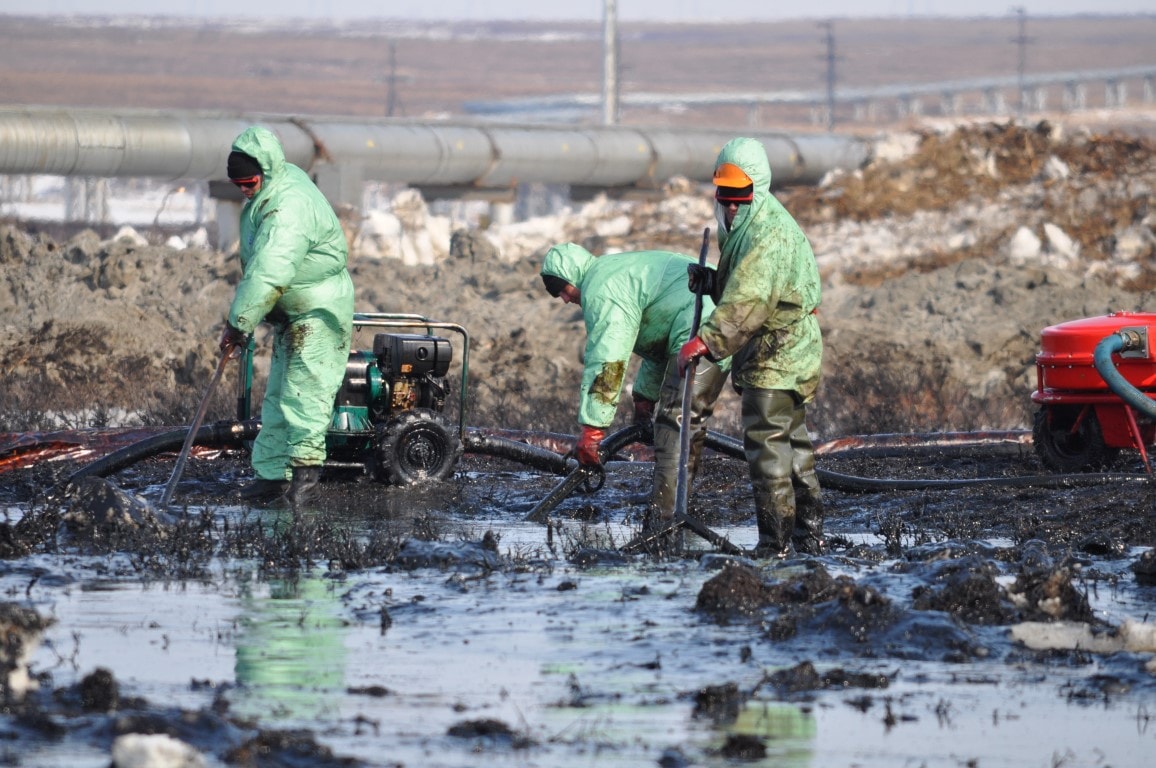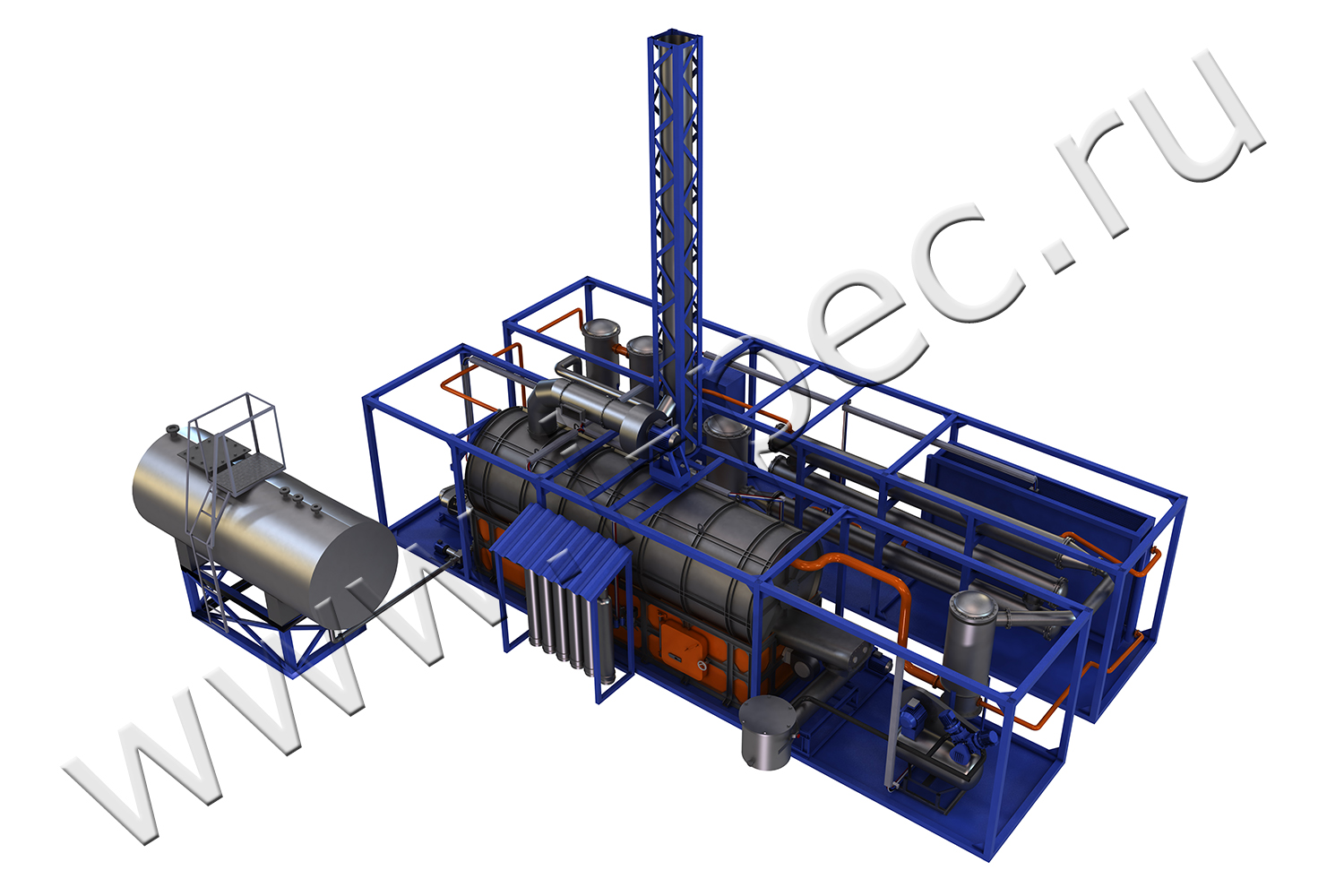Existing methods for eliminating oil pollution often do not meet environmental safety requirements due to the threat of secondary pollution. More often this problem arises in oil producing regions located in the subarctic and arctic climate. Ecosystems in these regions are vulnerable, with minimal recovery potential. Due to low temperatures and ice cover, biodegradation of oil is slow. Humic substances actively interact with petroleum hydrocarbons, and act as natural detoxifiers. Humates able to reduce the environmental burden of oil pollution on the environment.
Humic substances are high molecular weight association-prone polydispersed, multifunctional natural ligands. Humates exhibit macroligand properties due to the specificity of the structure, due to the presence of a hydrophobic aromatic framework and rich in functional groups carbohydrate-peptide periphery. This structure allows humic substances to bind petroleum hydrocarbons and reduce their toxicity. Along with binding properties, humic substances exhibit surface-active properties. Humates are natural detoxifiers, therefore their use for the reclamation of water and soil environments will not lead to secondary pollution.
The treatment of soils contaminated with oil products with humates ensures effective sorption of hydrocarbons and the activation of microbiological processes, resulting in accelerated destruction of oil products and soil cleaning.
At the same time, the agrochemical properties of the soil and fertility are improved. Under the influence of humates, the water holding capacity of the soil also improves, and the content of phosphorus available to plants doubles. This shows that under the influence of humates, the soil is cleansed and restores the basic properties. After applying humic acids to the soil, the characteristic smell of petroleum products disappears. A characteristic layer is also formed in the soil, which prevents the movement of oil products down the soil profile. As a result, surface and volume localization of the source of pollution occurs.
Biological reclamation

Soil fertility is largely determined by the content of humus - the organic part of the soil. Humus contains up to several percent of humic acids, which affect various processes in the biosphere. Humic acids are a universal stimulant of vital activity for plants and microorganisms. Activation of soil microflora accelerates the process of humification and enriches the soil with humus. In addition, humates bind toxicants in the soil.
In the complex of measures for biological reclamation of oil-contaminated lands Humate Baikal potassium, in powder form. The dose is 0.01% of the weight of one meter of cubic contaminated soil. Easily integrates into any reclamation scheme. Humate Baikal reduces the toxicity of petroleum products, stimulates the development of microflora and restores soil fertility. Humic preparations favorably affect the biodegradation of oil by both native microflora and specialized oil-destroying bacteria. According to the results of studies, for indigenous microflora, the oil content decreased by 25%, and for the biological product Roder by 30% compared with the control experiment without the use of humates. Observations showed that an increase in the biodegradation level of heavy oil fractions in the presence of hepatitis B is due to the solubilizing effect of hepatitis B and an increase in the bioavailability of heavy oil hydrocarbons for microorganisms. It was established that humic substances act in a complex way: they stimulate the reproduction of soil microorganisms and reduce the toxicity of petroleum hydrocarbons for microorganisms.
Thermal remediation

Pyrolysis installation for processing drill cuttings, photo from the site i-pec.ru
Contaminated soil after firing is an inert lifeless substrate. It is important to enrich such a soil with nutrients, organic matter and microflora. If this is not done, then the burnt soil will be excluded from natural circulation for a long time. In the composition of such a soil, you need to add a source of organics and humic acids, which will slowly give substances to plants. Suitable for such purposes. Humate GK. The humic acids contained in the preparation will help decompose the toxicants remaining in the soil and stimulate the development of microflora.
For the reclamation of burnt sludge, the following mixture is formed: 1 kg Humate GK + 10 kg humus + 20 kg peat per 1 m3 burnt sludge. Humate HA is also used in other mixtures, at a dose of 1 kg per 1 m3, together with any microbiological preparations.
Reclamation of technogenic sand substrates

Humates are used as a part of clay solutions from bentopowders and polymers to strengthen technogenic bulk substrates. Such solutions adhere to inclined bulk surfaces and form a film. Together with the processing of substrates with a bentonite-humate solution, it is convenient to introduce seeds of perennial herbs, microbiological and mineral fertilizers. Grass seeds stick to the surface and are not carried by the wind. This method of application allows you to supply seeds and plants with the necessary nutrients, accelerate germination and development. The treatments are carried out by the technique used in the gas industry for pumping liquid media during well cementing, for example using UNB-1-160 × 40 or cement aggregates.
The technogenic landscape turns green already two weeks after treatment with bentonite-humate solutions with simultaneous sowing of herbs. 2-3 years after sowing with bentonite formulations, stable sodding and strengthening of technogenic surfaces occurs.

